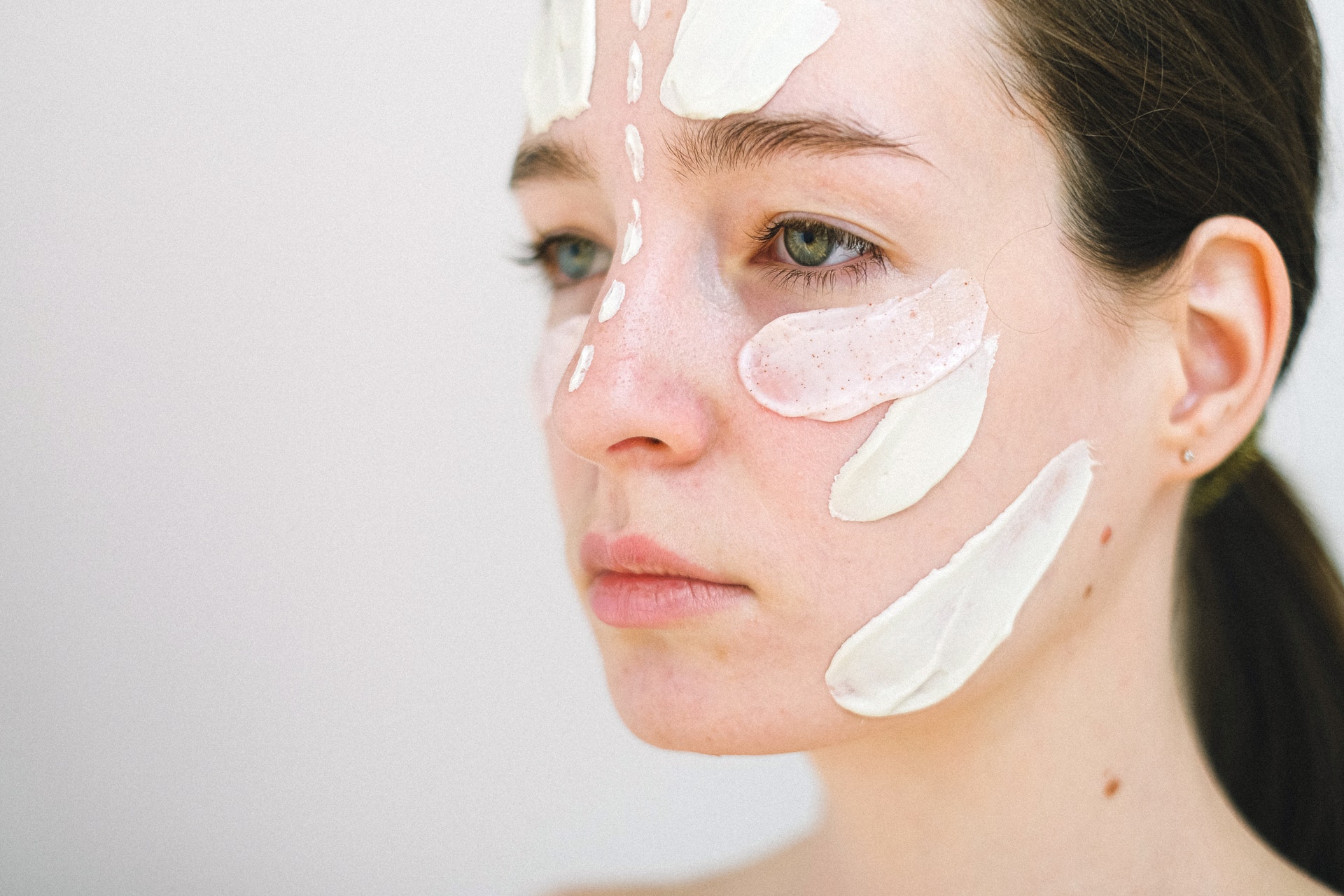5 Important Things You Need To Know When Choosing Which To Use: Physical Or Chemical Sunscreen
 |
| Physical Or Chemical Sunscreen. Woman in bikini applying sunscreen lotion on her body near poolside. Image from freepik.com |
Physical Or Chemical Sunscreen
Anyone should know this one fact: sunscreens are the most mandatory skincare products!
Whether you are a girl or a boy, whether you care about skincare or not, whether you want to live on a tropic island or Antarctica, everyone needs to wear sunscreen every day.
Unless you live in an area where there is no sun at all. Even then, you are still exposed to light from lights or devices which can damage your skin in the long run.
Physical Or Chemical Sunscreen?
Sunscreen functions to protect our skin from exposure to harmful ultraviolet (UV) rays of the sun.
The danger is not just making the skin “burn”, but it can also cause skin cancer and various signs of premature aging such as dark spots, wrinkles, or melasma.
Therefore, sunscreen is the most basic form of skincare that everyone should use without exception.
Sunscreen also doesn’t have to be expensive, just choose the most basic one. Not the brand or price, what is even more important is to be diligent in wearing it every day.
Now, after understanding how important sunscreens are, you need to choose between two types of sunscreens on the market, namely physical or chemical sunscreens.
Most sunscreens are divided into these two types, although there is now a hybrid between the two. The two types of sunscreens differ in their properties and ways of protecting the skin from UV rays.
Physical sunscreens contain minerals that act as physical shields or barriers to reflect harmful UV rays. A physical sunscreen is what we call a mineral sunscreen.
Meanwhile, chemical sunscreens (chemical) contain the function of absorbing and changing UV rays to become chemically harmless.
Don’t get confused, here are guides to help you consider choosing a physical sunscreen or a chemical sunscreen!
5 Important Things You Need To Consider
1. Physical sunscreens can leave behind a white cast, while chemical sunscreens are lighter and easier for the skin to absorb.
 |
| Young ethnic female in robe with terry towel on head applying moisturizing cream on face while looking in mirror in house. Whitecast effect from using physical sunscreens. Photo by Sora Shimazaki from Pexels |
From their content, the two sunscreens are indeed different even though they both contain chemicals.
Physical sunscreen contains active mineral ingredients such as titanium dioxide, which is a chemical element that is safe to use for various human needs.
Next, there is zinc oxide which has gone through the oxidation process so that it becomes a white powder that can prevent UV rays from penetrating the skin.
So when applied to the surface of the skin, this sunscreen tends to leave white marks.
Meanwhile, chemical sunscreens contain octylcrylene, avobenzone, octinoxate, octisalate, oxybenzone, homosalate, helioplex, 4-MBC, mexoryl SX and XL, tinosorb S and M, uvinul T 150, uvinul A Plus.
From its content, chemical sunscreens are much easier to use because they absorb into the skin, so they don’t leave white marks on the skin’s surface.
2. If you have sensitive skin, be careful, chemical sunscreens are easier to cause skin irritation.
 |
| Side view of crop female model spreading white cream on face during skincare procedure on white background. Check the content of the screen you are using. Photo by Anna Shvets from Pexels |
If you feel a sensation of heat, stinging, and redness after using a chemical sunscreen, then stop using it immediately.
In addition, long-term use of chemical sunscreens on sensitive skin can also cause black spots or gray spots on the surface of the skin.
Sensitive skin types are better off using physical sunscreen because they tend to be more acceptable to all skin types.
So be careful, check the sunscreen content you use and be more aware of your skin reactions.
3. Physical sunscreens work faster because they only cover the surface of the skin. Unlike chemical sunscreens, which take 20 minutes so that the skin can absorb them and work optimally.
 |
| Woman Applying Lotion on Hand. Photo by Linda Prebreza from Pexels |
A physical sunscreen UV content will not decrease or be damaged when exposed to sunlight.
This is because when applied to the skin the ingredients remain on the surface of the skin. However, UV filters on physical sunscreens cannot provide comprehensive protection against UVA and UVB, because physical sunscreens work to protect the skin by reflecting UV rays hitting the surface of the skin.
So, the use of physical sunscreen is long-lasting and works immediately after application to the skin surface.
Meanwhile, chemical sunscreens can provide comprehensive protection against UVA and UVB. However, this sunscreen has a UV filter with poor stability.
UV filters on chemical sunscreens absorb into the skin, it takes at least 20 minutes for all the ingredients of this sunscreen to absorb into the skin, so that it can work optimally by absorbing UV rays and turning them into compounds that are not harmful to the skin.
A UV filter will go the extra mile here, so it can easily get damaged when exposed to sunlight, so it needs to be applied repeatedly at regular intervals.
4. The most important consideration in choosing sunscreen is to adjust it to your skin condition and the needs of your activities.
 |
| Sun, Creme, Cream, Sunblock, Beach, Funny, Protection. Image by Sammy-Williams from Pixabay |
If you are in the skin breakout phase or are irritated due to acne and need outdoor activities, you can use physical sunscreen to protect your skin from the sun.
You can use the following sunscreen brand recommendations: Vorte Peau Daily Facial Sun, Innisfree Intensive and Triple Care, Prevage with Mineral Broad Spectrum, Sensatia Botanicals Sunscreen Lotion.
Not only safe for sensitive skin, but these brands also provide maximum protection, contain anti-aging and antibacterial properties.
If you have normal skin and don’t get irritated easily, you can choose a chemical sunscreen for long activities outdoors.
ou can use several recommended chemical sunscreen brands that are safe for the skin. For example: Joylab Aqua Sun-Day, For Skin’s Sake, Bioderma Sunspot and Biore UV.
Apart from protecting the skin from UV rays, some of these brands also have moisturizers and prevent acne.
5. Inappropriate use of chemical sunscreens does not only affect the skin but can also be harmful to the environment.
 |
| Person Holding Blue Plastic Cup on Brown Sand. Photo by Linda Prebreza from Pexels |
One drop of oxybenzone can fade the color of coral reefs in a wide range of 325 meters.
The use of chemical sunscreens for swimming, snorkeling, and diving in the sea can damage underwater ecosystems.
Apart from being used for activities at sea, excessive use of chemical sunscreens can also damage aquatic ecosystems.
This is because the content of oxybenzone and octinoxate in chemical sunscreens is difficult to decompose or disintegrate naturally in water.
So, after knowing some important things about physical and chemical sunscreens, you should understand what to consider before choosing sunscreen.
Don’t make the wrong choice! More serious skin problems might arise if you choose the wrong one.
Also, whether you want a physical sunscreen or a chemical sunscreen, the important thing is to adjust it to your skin condition and needs, and you have to use it wisely!
Comments
Post a Comment